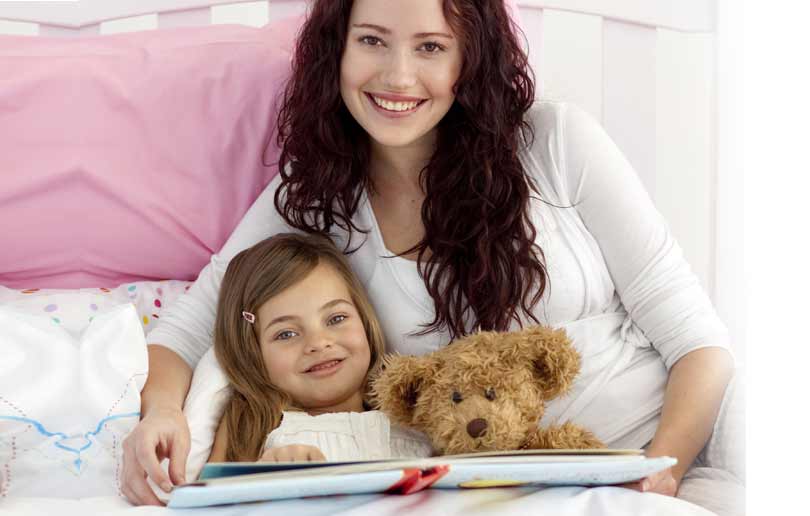How to encourage your child to enjoy books
Getting a child into the habit of reading books is the first step to raising a thoughtful, curious, stimulated and motivated little human being! Writer and stay-at-home mum, Hina Zohaib Khan, explains…
It pays such rich dividends in the development of any child when their parents find opportunities to read to them as part of their regular routine. Even from age 6-7 months, your child will absolutely love sitting on your knee, looking at pictures, with you holding their hand, gently pointing to ‘the cat, the sun, the tree, the ball, etc. This kind of repetition in a regular routing really helps them to learn and also love reading. You child will love listening to your voice and stories, and reading will become an integral part of their life grows.
Reading books does wonders. Start as young as possible, using small books with sensory elements such as sound, touch, brightly coloured illustrations and short sentences. But when your child has times when they show no interest, don’t force them to sit and listen – maybe save the reading as part of the routine of getting them calm, ready for bed.

Developing Vocabulary
Reading develops children’s imagination and triggers their thought process. They begin picking up syllables and even words from the language as early as six months. It’s best to do face-to-face animated reading, as it builds their language and communication skills.
Babies are pretty sharp and make links easily. Read words out aloud and repeat again and again by reading the same books regularly, until they associate a particular page with a specific word. Try to make them laugh, so they know reading is fun. There are special books for babies that have different textures and colours inside, and many are made from fabric so they can easily be cleaned in the washing machine.
Babies who are read-to have a significantly higher vocabulary than those who are deprived of this, so you should introduce nursery rhymes, stories, fairy tales, naming shapes, colours, words and pictures into every day.
Bed-Time Reading
Associating the bedtime reading habit at an early age this will go a long way for a number of reasons. Firstly, it helps to develop a routine so your child knows that we are reading a book and then we will sleep. Secondly it helps in mental cognition and strengthens your child’s memory.
Re-read
Slowly but surely your baby will learn words, like car, truck, animal names, and even enjoy making animal sounds when you ask them, for example: ‘what does the cat say?!’. They will also be more observant and will get inquisitive about objects they don’t understand. You’ll have fun answering all the interesting questions from their curious minds.
Enjoy Their Development and Participation
When you start reading books to your children, and as they develop some motor skills they will try to grab the book or chew it. Once they discover what they could do with their little hands, reading time will become a little tug-of-war with mummy trying to flip the pages or trying to eat the book! This is absolutely natural for small babies, so a good tip is to gently hold out their pointed finger in your hand and help them to point to the pictures as you are reading – this helps them to engage in the reading. However, it is really important to NEVER force small babies and toddlers to be interested in a reading session (it is not about you!); and NEVER get frustrated with them if they are playful mood while reading.
As your child gets older, let them hold the book – and even choose the books that they will now be familiar with. Turn the pages and allow to them emulate you when you say the words. Your child may also move their mouth, make sounds or pretend to read, which is a great sign that you are making a wonderful effort. A massive point of enjoyment for older babies and toddlers who have become familiar with a particular book is when you read a familiar sentence and let them fill in the last word themselves – for example: “…and then the cat said…….’ (leave a pause and let your child fill in ‘meow.’)
Some Favorites
Some of the classic children’s favourites include: The Very Hungry Caterpillar, Ten Little Fingers and Ten Little Toes, Where is the Green Sheep, Dear Zoo, Pout Pout Fish, Giraffes Can’t Dance, Brown Bear Brown Bear, The Napping House, Dr. Suess ABC, Gruffalo, and so many more that your baby or toddler will adore.
Like any other habit, if you nurture this routine of reading at home, your child will happily become accustomed to it. As they grow up, they will go on to read books independently and explore different genres for themselves. So be patience and enjoy reading with your bubba and enjoy this unique and wonderful time together!











Comments